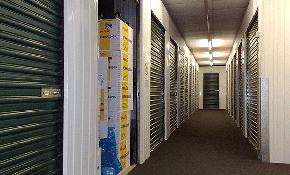Seattle is days away from enforcing the first stage of its Energy Benchmarking and Reporting law, Council Bill 116731, requiring nonresidential and multifamily building owners to annually report and disclose EPA ENERGY STAR Portfolio Manager benchmarking data and performance ratings.
Currently, 26% of the city of Seattle’s carbon emissions come from buildings and the ordinance’s intent is in support of the Green Building Capital Initiative goal to reduce energy consumption in existing building stock by 20%. Additional goals of the ordinance are to lower energy costs to owners and tenants, decrease greenhouse gas emissions, inform better building management and design practices to allow an informed market to drive energy efficiency improvements, and to create job opportunities in the green economy.
The Seattle energy disclosure law expands on Washington state’s energy disclosure law, more information on which can be found here.
Buildings Required to Disclose Energy
Commercial and multifamily building owners will be required to annually report and disclose EPA ENERGY STAR Portfolio Manager benchmarking data and performance ratings according to the following schedule:
- October 1, 2011: Commercial Buildings over 50,000 SF (must have current benchmarking results entered into their Portfolio Manager records)
- April 1, 2012: Commercial Buildings over 10,000 SF, Multifamily Buildings and Mixed Use Buildings with five or more dwelling units
Building owners should leave ample time for utilities to comply with their requests for energy consumption data – utilities have up to 60 days to comply with requests.
Energy Reporting
Building owners should follow these steps in ENERGY STAR Portfolio Manager:
- Review and confirm the accuracy of the building information
- Select the “City of Seattle Energy Disclosure” as an authorized service provider for each building
- Enter the building identification number provided by the Department of Planning & Development (DPD) into the “City of Seattle Energy Disclosure Building ID” field for each building record, including aggregate energy consumption data for the previous calendar year.
DPD staff will use the data to monitor changes in energy use across the entire portfolio of larger buildings in the city. This information will allow staff to identify market sectors with the greatest energy efficiency opportunities in order to guide development of future policies and incentive programs, and develop data on typical expected energy loads for different building uses.
Energy Disclosure
The following parties may request building owners to release building energy performance information as provided in the Portfolio Manager Statement of Energy performance:
- A current tenant –within seven days of request
- A prospective tenant negotiating a lease agreement –within seven days of request, and at or before the time owner presents a sales contract
- A prospective lender considering a financing or refinancing application – within seven days of the request, and at or before the time the owner presents a loan application
Lenders can request a disclosure report while processing any transaction involving the sale or lease of an entire building or of a separately owned portion of a building. A disclosure report can also be requested in conjunction with financing of other activities, i.e. tenant improvements or a major renovation. The Portfolio Manager Statement of Energy Performance shall be provided as the energy disclosure report and must be based on data from the 12 consecutive months of the previous calendar year.
Exemptions
The building does not need an energy rating if it is classified under the current Seattle Building Code as:
- Factory Industrial Group- this includes buildings used for assembling, disassembling, fabricating, finishing, manufacturing, packaging, repair or processing operations
- High-Hazard Group H- this includes buildings involved in the manufacture, processing, generation or storage of materials that constitute a significant physical or health hazard.
Mixed-Use Building Responsibilities
DPD may allow the owners of mixed-use buildings to benchmark two or more space uses separately. Benchmarking and reporting by “sub-building” is permissible if the following conditions apply:
- Each sub-building is under common legal ownership or managed by a single owners’ association with reporting responsibility
- Each sub-building is served by separate HVAC systems
- Each sub-building is separately metered from other portions of the building
When no owners’ association or other similar entity exists, the owner of the largest portion of the building’s gross square footage is responsible for complying with benchmarking and reporting requirements for the entire building.
Violations and Penalties
A $150 citation may be issued the first time a building owner fails to prepare or update information in Portfolio Manager. If a Portfolio Manager benchmarking report is not filed within 15 days of the date the citation is issued, the City may issue a notice of violation with a penalty of $150 per day for the first 10 days of noncompliance, and $500 per day for each day in violation past the 10th day until compliance is achieved.
If the City determines that a tenant has failed to provide information to a building owner as required, a $150 citation may be issued for the first violation and a $500 citation may be issued for the second or any subsequent violation.
More detail on Seattle’s energy performance ordinance can be found here.

















 Copyright © 2024 ALM Global, LLC. All Rights Reserved.
Copyright © 2024 ALM Global, LLC. All Rights Reserved.